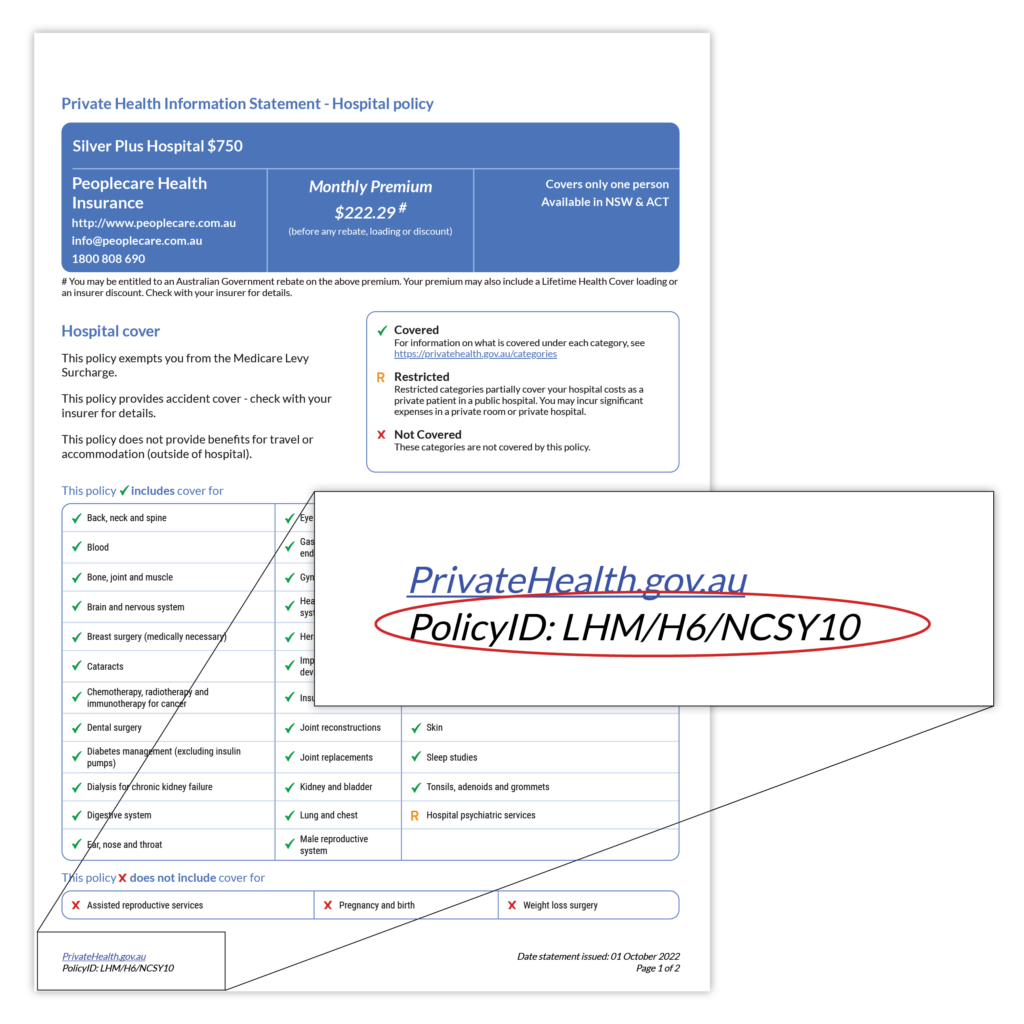 Allianz Care Australia
Allianz Care Australia
 CBHS International Health
CBHS International Health
If you have both Hospital Cover and Extras Cover with one insurer, you might assume that those 2 policies are treated as one policy. It turns out you can have Hospital and Extras cover as ‘separate’ policies – also called ‘split’ or ‘second’ or ‘standalone’ policies, depending on the terminology your insurer uses. This can get a bit confusing (especially since every health insurer has different rules).
When it comes to claims and payments, having your Hospital Cover and Extras Cover as separate policies with your insurer won’t make any difference to your cover. But if you want to look for a new insurance deal, comparing your policies with other insurers could be a little tricky. It means you’ll have to compare your Hospital Cover and Extras Cover separately. But we’ve made this easier to do – you can compare your existing ‘combined’ health insurance policy or ‘separate’ policies using the healthslips.com.au Calculator.

Do I have a combined health insurance policy or separate policies?
The best way to know if your Hospital Cover and Extras Cover are combined or treated as separate policies is to look at your Private Health Information Statement, which is emailed to you when you first take out cover, then every 12 months (and again if your insurer changes the rules about your cover). At the bottom left-hand corner of the document, you’ll find your Policy ID. If you have a combined policy, you will have one Policy ID for both your Hospital and Extras Cover, but if there are 2 different Policy IDs, that means your insurer regards them as separate or split policies.

Why do I have separate policies?
We asked 4 major health insurers to explain why some customers might be given different Policy IDs for their Hospital Cover and Extras Cover instead of one Policy ID.
Both Bupa and HCF said Hospital and Extras policies were usually combined under one Policy ID, but there might be separate policies if individuals within a family, or each person within a couple, needed different levels of cover.
According to Lynette Macks, spokesperson for HCF: “We sometimes see split policies where the entire family is covered by Extras under one ID, while one member is separately covered for Hospital under another ID. For convenience, we generally recommend combining policies under one ID although we understand the need for flexibility based on individual circumstances.”
Nib said if a customer took out Hospital and Extras Cover at the same time, it was generally treated as a combined policy. But taking out these types of cover at different times might result in nib issuing standalone policies.
“Members who join nib on a Hospital product will be provided a policy number for the Hospital product,” explained nib spokesperson Scott Rochfort. “If they then take out a separate Extras product, they will be provided a policy number for that product as well, meaning they will have 2 policy numbers with nib.”
Similarly, Medibank also issues separate policies for couples or families who want different levels of cover, and confirmed that there were other circumstances where separate policies might exist.
“These can include where dependants of separated parents need to be insured under more than one policy due to custody arrangements, where members are victims of domestic and family violence, or where overseas visitors (including workers and students) who hold an overseas Hospital Cover want to take out a retail Extras Cover,” said Medibank’s Juliet Williams.
I have separate Hospital Cover and Extras Cover policies. How do I compare them to others?
Want to compare your Hospital Cover and Extras Cover policies to find out whether you can get a better deal? Visit the healthslips.com.au Comparison Calculator. If they’re standalone policies, and you have separate Policy IDs for each policy, you’ll need to enter the policy IDs separately (the Calculator will prompt you when to do this). If the policies are with different insurers, you’ll need to do separate calculations (currently our Calculator can’t compare policies from 2 different insurers to other policies on the market).

Knowledge is power – that’s the guiding principle behind everything Trudie writes, and it’s a philosophy she brings to her work at healthslips.com.au. By breaking down complex information into easy-to-understand blogs and stories, she aims to empower Australians to make the best choices and an informed decision around private health insurance.
Trudie understands firsthand some of the complexity of private health insurance having moved to Australia from New Zealand and having to navigate a vastly different public healthcare system and health insurance structure.
Trudie holds a Bachelor of Communication Studies (journalism major) from the Auckland University of Technology.
Policies change monthly, stay informed
- Insurers regularly update policies, introduce new policies and close policies. Our data is updated monthly.
- We will only send information relevant to you. You can unsubscribe at any time. See our Privacy Policy.





